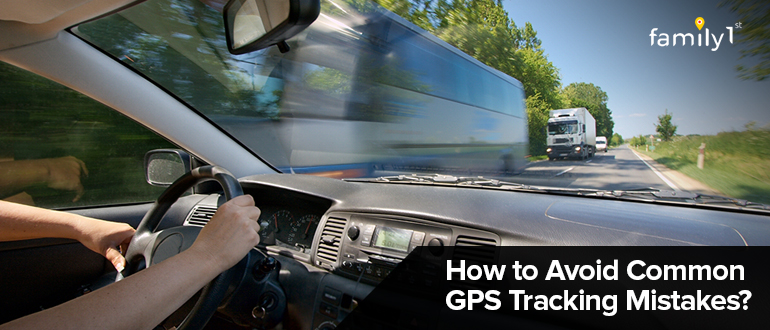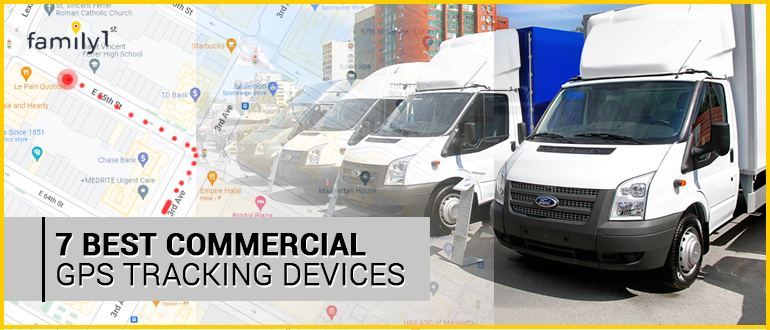We all use GPS tracking technology to solve our daily struggles. GPS tracking technology solves our daily struggles, from finding the quickest path to exploring unexplored places. GPS always seems to find a way into our lives. But, you will be surprised to know that GPS also has some downsides. In this blog, we will talk about seven common GPS tracking mistakes that users often make and also explore ways to correct them.
We know how crucial it is for you to generate accurate GPS results. Therefore, we will provide actionable solutions to make your GPS experience smoother.
Why is GPS so important for us? Before we explore GPS tracking mistakes, let’s take a moment to appreciate the profound impact this technology has on our lives. GPS, or Global Positioning System, has transformed the way we navigate and interact with the world around us.
Table of Contents
Everyday Uses of GPS
Navigation: GPS navigation works like a charm and provides real-time directions, helping you avoid traffic jams and find the shortest routes, whether you are on a road trip or simply commuting to work.
Fitness Tracking: Many fitness enthusiasts rely on GPS-enabled smartwatches and apps to track their runs, hikes, and bike rides, measuring distance, speed, and even elevation.
Location Sharing: GPS makes it easy to share your location with friends and family, ensuring they know where you are for safety or meet-up purposes.
Asset Tracking: Businesses use GPS tracking to monitor the location of valuable assets such as vehicles, equipment, and merchandise, improving efficiency and security.
But despite all these functionalities, imagine that your GPS tracker turns out to be a source of frustration. If you run a small business with a fleet of delivery vehicles, you know the importance of GPS tracking to ensure your packages reach customers on time. But what happens when your GPS tracker fails, and you can’t locate a missing truck? Let’s see seven common GPS tracking mistakes, understand why these faults happen, and, most importantly, what’s the solution.
7 Common GPS Tracking Mistakes
Neglecting Software Updates
Neglecting software updates can lead to glitches and outdated maps when you need your GPS the most. Have you ever put off updating your GPS app or device, thinking, “I’ll do it later”? This seemingly harmless habit could result in a nightmare scenario.
Picture this: you are on a family road trip, relying on your GPS to guide you to a remote cabin in the woods. Suddenly, the GPS starts acting up, and you end up on an outdated forest service road, far from your destination. A simple software update could have prevented this. So, regularly update your GPS software to ensure accurate and reliable tracking.
The solution is to make it a habit to check for software updates regularly. Most GPS devices offer the option to automatically download and install updates. Ensure your device is connected to a stable internet connection to keep it up-to-date.
You Ignore Satellite Signal Strength
Ignoring satellite signal strength can be a costly mistake. Have you ever found yourself lost in the middle of nowhere because your GPS lost its signal? We’ve all been there. It can be incredibly frustrating when your GPS becomes unreliable due to signal issues, especially when exploring new, remote areas.
For instance, imagine hiking in a beautiful national park with your family, deep in the wilderness, and your GPS loses signal. Panic sets in as you try to retrace your steps without a reliable guide. This situation can be stressful and potentially dangerous.
What you need to do is pay attention to satellite signal strength and take precautions in areas with weak signals, such as Montara in California. Before heavily relying on GPS in unfamiliar areas, note the signal strength indicator on your device. If it’s weak, consider using additional navigation aids, such as paper maps or landmarks, to avoid getting lost.
Overlooking Battery Life
When your GPS runs out of battery, it’s incredibly frustrating and potentially unsafe, especially when you need it to navigate through unfamiliar territory. Have you ever had your GPS device die on you in the middle of a journey? Navigating in such cases becomes so difficult. Suddenly, your phone’s battery icon turns red, and you realize you forgot your charger. Your enjoyable day out quickly turns into a frantic search for the nearest outlet.
But how can we avoid this situation? You should monitor and conserve your GPS device’s battery life to ensure it lasts the entire trip. Before embarking on a journey, make sure your GPS device is fully charged or equipped with a portable charger. You can also adjust your device’s settings to reduce battery consumption, such as dimming the screen or turning off unnecessary apps. It may sound simple, but we mention it because it has proven extremely helpful during difficult situations and should not be overlooked. You can also invest in GPS trackers with long-battery life so you hardly run out of that.
Failing to Calibrate your GPS
Have you ever wondered why your GPS seems to place you slightly off of your actual location? Inaccurate positioning can lead to missed turns and confusion, especially when you are driving in a bustling city or hiking in the mountains. Imagine this scenario: you’re driving in a new city, trying to find a family-friendly restaurant recommended by a friend. Your GPS indicates a left turn, but as you follow the directions, you find yourself on a one-way street going in the wrong direction. You quickly realize that your GPS isn’t accurately calibrated.
A similar incident happened with a driver in Massachusetts. In the classic case of ‘GPS made me do it’, the DoorDash driver took a dirt path straight into a pond.
So now it’s clear: calibrate your GPS device regularly to improve accuracy. Do it by following the manufacturer’s instructions or settings menu. This simple step can significantly enhance the accuracy of your device.
Misinterpreting GPS accuracy
Misinterpreting accuracy can lead to mistrust in your GPS device, making you hesitant to rely on it. Understand how GPS accuracy works and trust it within its limits.
Imagine you are on a family camping trip, and you decide to hike to a beautiful lookout point. Your GPS device shows you as “off-road,” even though you are following a well-marked trail. Doubt creeps in, and you start to question the reliability of your GPS, even though you know you are on the right path. What now?
The solution is to familiarize yourself with the concept of GPS accuracy and its limitations. Trust your device within its stated accuracy range, and use common sense when navigating, especially in challenging environments.
Neglecting Geofencing
Neglecting geofencing can leave you in the dark about crucial location-related events, causing unnecessary stress and worries, especially when it comes to keeping your loved ones safe. Always make the most of geofencing to enhance your GPS tracking experience and maintain peace of mind.
Imagine you have entrusted your teenager with the family car for a night out with friends. With geofencing, you could have easily set up a virtual boundary around their usual hangout spots, receiving alerts when they enter or leave those areas. But you didn’t, and now you are anxiously waiting for their return, unsure of their whereabouts.
That’s why you should use geofencing to create safe zones and receive real-time alerts when your tracked item enters or exits those zones. Whether it’s ensuring your child’s safety or protecting valuable assets, geofencing adds a layer of control and confidence to your GPS tracking arsenal. Don’t let this powerful feature go to waste.
The Solution: Family1st Portable Tracker
Now that we have covered these seven common GPS tracking mistakes and their solutions, you might be wondering how to make your GPS experience even more foolproof. That’s where the Family1st portable tracker comes in.
The Family1st Portable GPS tracker is a versatile and reliable device that offers solutions to common GPS problems. With real-time tracking available through the app, users can stay informed about the whereabouts of their loved ones or valuable assets. The inclusion of geofences, accommodating up to 10 without overlapping, allows for customized boundaries, ensuring that you receive alerts when someone or something enters or exits a designated area.
The device provides peace of mind with 24/7 email and phone support during regular business hours, making it convenient for users to resolve any issues they may encounter. Activation is a straightforward process, and with compatibility across multiple devices, family members, friends, or caregivers can all monitor the device simultaneously. Additionally, the compatibility with Alexa adds convenience to tracking.
The device also offers travel history and 4G connectivity, ensuring accurate and up-to-date location data. Its water-resistant design is suitable for most weather conditions, and a generous 2-week battery life on the basic plan, with a minimum of an hour of drive time per day, means less worry about frequent recharging.
The Family1st Portable GPS tracker excels in outdoor tracking. Overall, the Family1st Portable GPS tracker is a valuable tool for enhancing location monitoring while addressing common GPS-related challenges.
Conclusion
It is easier to live now that GPS tracking has changed. Still, lost signals, wrong locations, and dead batteries keep coming back to haunt us. Ensure the GPS tag is in the right place. You can avoid these problems by using the right GPS tracker, such as the Family1st. Keep up with the news, enjoy the ease of things, and make every trip special. Be careful with the tracker, and avoid the mistakes we discussed above when using GPS tracking.









Next
Previous